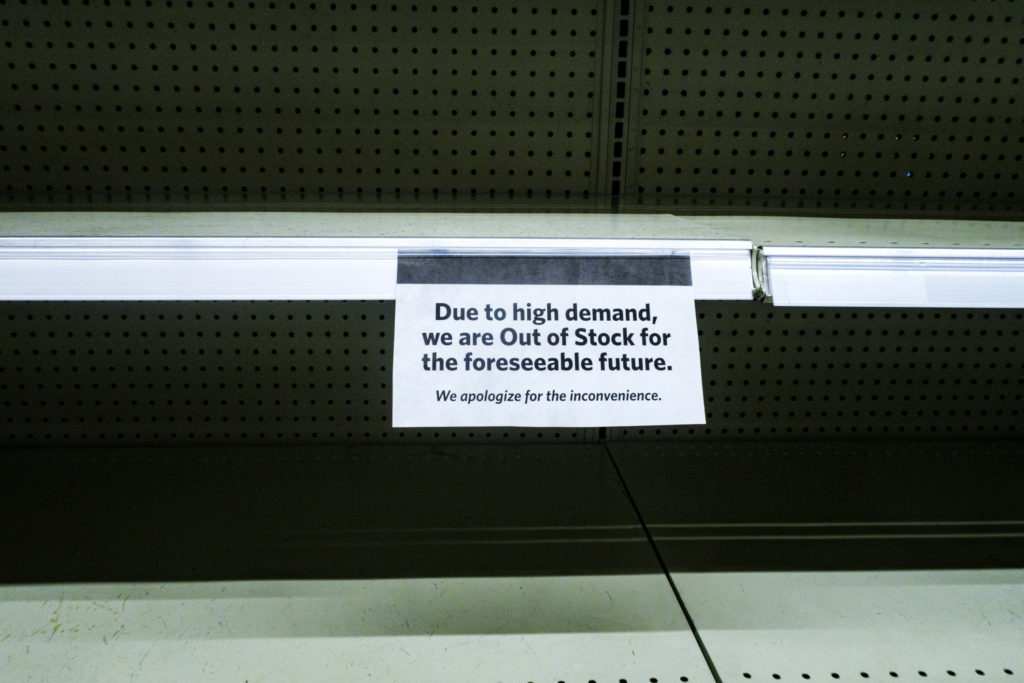
Sen. Tammy Baldwin (D-Wis.) joined a group of experts to discuss solutions to the ongoing supply chain crisis. It starts with making more stuff locally.
If you played 2021 bingo, chances are the term “supply chain” was probably on your card. And, unfortunately, it’s likely to be there again this year.
Supply chain shortages caused by COVID-19 factory shutdowns remain, and now there are a whole host of new challenges. Vladimir Putin’s invasion of Ukraine is now seen as the No. 1 risk to the global supply chain, and COVID-19 is still causing havoc – factories in Shenzhen, the hub of China’s electronics manufacturing, are currently shutdown because of rising cases.
Again and again, it seems the United States learns the lesson the hard way.
“In the wake of the pandemic, there was an enormous discussion that went on about the fact that we were unable to supply ourselves with Made in America products, what we needed to protect ourselves, whether that was masks or gowns or gloves or tests and reagents and swabs, I mean, the list goes on,” said Sen. Tammy Baldwin (D-Wis.). “We didn’t solve the problem then, although I think we identified it in more detail, just like today, we are having the discussion about energy and where we go after Putin’s aggressions and his invasion of Ukraine.”
Baldwin joined The American Economic Liberties Project, Groundwork Collaborative, and The American Prospect for a discussion last week on how to repair and revitalize our supply chains. Baldwin, a longtime proponent of American manufacturing and Buy America, knows the issue well – and as she told moderator David Dayden, it’s one that Wisconsin manufacturers are coping with.
Wisconsin’s Manufacturing Extension Partnership commissioned a study last fall to gauge the state of local businesses, Baldwin said. Typically, labor issues dominate these studies.
This time, the No. 1 concern was the supply chain.
“I’m not just talking retailers, it’s manufacturers who can’t get the inputs they need for putting together their products,” Baldwin said. “What makes this all the more frustrating is that there is a lot of demand for the products they make, and if they were only able to get their inputs, they would be selling into a very hot market right now.”
Dayen, who recently took part in a special series on the supply chain crisis for The American Prospect, noted that the offshoring of jobs and closing of American factories is contributing to the problem.
“For years, we’ve had companies chase cheaper labor, they centralized production in other parts of the world… [that] put a lot of pressure on the supply chains to produce, and any disruptions are magnified,” Dayen said.
Baldwin agreed, noting that Wall Street investors “can be very effective at using stock-based pay to convince executives to do what it is they want.”
“Wall Street has an ideology that demands that companies cut investment and distribute cash to shareholders, the hope is that these companies get a stock price increase at least in the very short term. This downsize and distribute playbook is often justified as efficiency or capital discipline but the crisis has revealed that these strategies are simply short sighted, and really, really greedy,” Baldwin said. “So corporate governance reforms and more empowered workers are really what’s needed to change the incentives.”
So how does the United States begin to actually fix this crisis?
There’s no question that reshoring critical manufacturing and supply chains needs to happen. Baldwin has introduced legislation called the Supply Chain Resiliency Act to identify where that process should start.
The legislation “requires a new Office of Supply Chain Resiliency at the Commerce Department to do forward looking analysis that anticipates what products we need and what are susceptible or vulnerable to shortages,” she said.
“It’s kind of like the old ’stress tests’ we used to do on banks,” Baldwin continued. “This is stress testing that will help inform what support the Office of Supply Chain Resiliency will be able to provide. Ultimately, we hope this support will take the form of grants and loans, or loan guarantees to domestic manufacturers to expand their production of critical products.”
There is $45 billion in the House COMPETES Act for this type of support, Baldwin noted. The House passed this legislation and the Senate passed a similar bill, and the two chambers are now working to combine the two versions.
Strong Buy America preferences also are important, as they will ensure that when the government spends taxpayer money, it is reinvestment right back into American workers, manufacturers and other businesses.
Unfortunately, Buy America hasn’t always lived up to its full potential, Baldwin said, as too many exemptions and waivers have been issued by previous presidential administration in a “rubber stamp” sort of fashion, Baldwin said.
“I’m not sure these waivers are granted in a thoughtful, thorough manner,” she added.
The Biden administration has taken steps to strengthen Buy America, including by introducing a new website that is designed to bring transparency to the waiver process, with the ultimate goal being to grant fewer waivers.
“The idea of having a transparent database will also allow small, medium businesses, manufacturers to scrutinize it and say, ‘Oh, we can make that, piece, that part that component and maybe retool to re-shore these vulnerable supply chains that go thousands of miles overseas,’” Baldwin said. “Now that’s not the only issue we deal with, but that’s a big step forward to address ‘Buy America’ loopholes.”
Labor protections are also critical to maintaining strong supply chains, Baldwin said. Underinvestment in supply chains wasn’t limited to just physical things, but also the workforce.
“Companies with unionized workers did better during crisis because to keep a steady supply of workers, you need to respect the dignity of work, treat them right and treat them well,” Baldwin said. “A union helps ensure that.”
